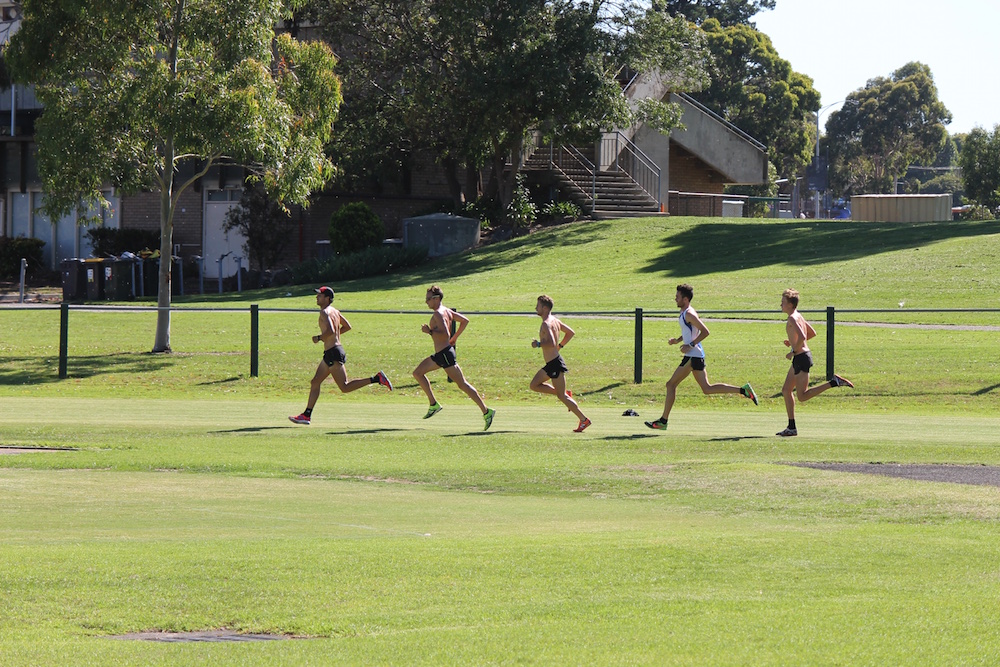MATT FITZGERALD – Runner’s Tribe
Matt Fitzgerald is an acclaimed endurance sports coach, nutritionist, and author. His many books include The Endurance Diet, 80/20 Running, and How Bad Do You Want It?
I’m currently coaching a runner, we’ll call in Dylan, who’s training for the Berlin Marathon. Recently he asked me why I’ve had him run his recent marathon-pace efforts at 6:51 per mile (2:59 marathon pace) when he hopes and (more or less) expects to run closer to 2:50 in Berlin. His concern was that I judged his goal to be out of reach.
I assured Dylan that I do believe his goal is realistic, but that, for the most part, workout pace targets should be based on a runner’s current fitness, not on his goal time. Aiming for pace targets that are based on your goal is a bit like doing your workouts with another runner who’s a little fitter than you and trying consistently to keep up. Assuming the workouts this other runner is doing are appropriately challenging for him or her, then they are almost by definition too challenging for you. Sure, you may survive a few of them by treating them as quasi-races, but in the long run you’ll overcook yourself.

Ben told me he was convinced that Trent would not have run this fast if he had trained for a 2:12 all along, nor perhaps even if he’d trained for a 2:15 from the beginning. It was because he was always chasing targets that were appropriate to where he was at each step that he scored his breakthrough. The reason he told me this story was that Ben intended to take the same approach with me during the 13 weeks I trained under him in Flagstaff. I willingly submitted to the plan, felt terrific through the entire process, and ran my own breakthrough marathon at the end of it.
So, that’s the principle: Train as the athlete you are today, not as the athlete you hope to be on race day. The devil, of course, is in the details. Putting this principle into practice requires that you have an accurate knowledge of your current fitness level on which to base workout pace targets. There are three general ways to gain this knowledge: experience, testing, and on-the-fly. They are not mutually exclusive.
Experience: If you’ve been running competitively for a while, you have at least a pretty good sense of where you are fitness-wise at all times. You can use this self-knowledge to estimate your current performance capacity and select appropriate workout pace targets. For example, suppose you’ve just come off a training cycle that culminated in a PR 3:27:43 marathon, taken a week off, spent two more weeks slowly easing back into training, and are now ready to begin ramping up for another marathon PR attempt. In this case, based on your knowledge of how much fitness you’ve given up in past scenarios of this type, you might estimate your current marathon performance capacity to be in the 3:42 range and base your initial workout pace targets on this estimate (using either my 80/20 Zone calculator or Greg McMillan’s Running Calculator).
Testing: Alternatively (or additionally), you can measure your current fitness level more formally by performing a time trial, going in for a lactate threshold test, getting a lactate threshold or VO2max estimate from a device such as a Garmin Forerunner, or racing. Bear in mind that it’s generally not a good idea to race too early in a new training cycle and that testing-based measurements become outdated as your fitness improves, so you will need a means of adjusting them that does not entail doing a race or time trial every weekend! To that end, keep reading.
On-the-fly: The on-the-fly method of setting workout pace targets consists of always doing workouts of a given time at the same effort level and allowing your numbers to slowly improve as you gain fitness. For example, early in a training cycle you might choose to target a pace of 6:56 per mile in a set of lactate threshold intervals based on either experience or testing. An appropriately designed and executed lactate threshold intervals session will feel “comfortably hard” and leave you tired but not exhausted. If you pay attention to your perception of workout and allow it to regulate your pace appropriately in all such workouts, you may automatically do the next workout of this kind in the cycle at 6:53 per mile, the next at 6:51, and so on.
Make sense?
About the the author – MATT FITZGERALD
Matt Fitzgerald is an acclaimed endurance sports coach, nutritionist, and author. His many books include The Endurance Diet, 80/20 Running, and How Bad Do You Want It? Matt’s writing also appears regularly in magazines and on websites such as Women’s Running and competitor.com. His online training plans have helped thousands of athletes of all experience and ability levels achieve their goals. Certified by the International Society of Sports Nutrition, Matt has consulted for numerous sports nutrition companies and he is the creator of the Diet Quality Score (DQS) smartphone app. A lifelong athlete, he speaks frequently at events throughout the United States and internationally. Matt can be reached at matt@8020endurance.com.
Want a readymade or custom training program from one of the top coaches in the world. Follow this link: http://8020endurance.com/8020-run-plans/
80/20 training plans are provided via TrainingPeaks.com or FinalSurge.com. Both platforms offer comprehensive scheduling, logging, and analysis with outstanding web and mobile applications for all 80/20 plans. Our structured workouts plans, below, represent the latest training technology that makes completing a workout easier than ever. Structured workout run plans measure your intensity by either Pace,
Heart Rate, or
Power.
http://8020endurance.com/8020-run-plans/

















